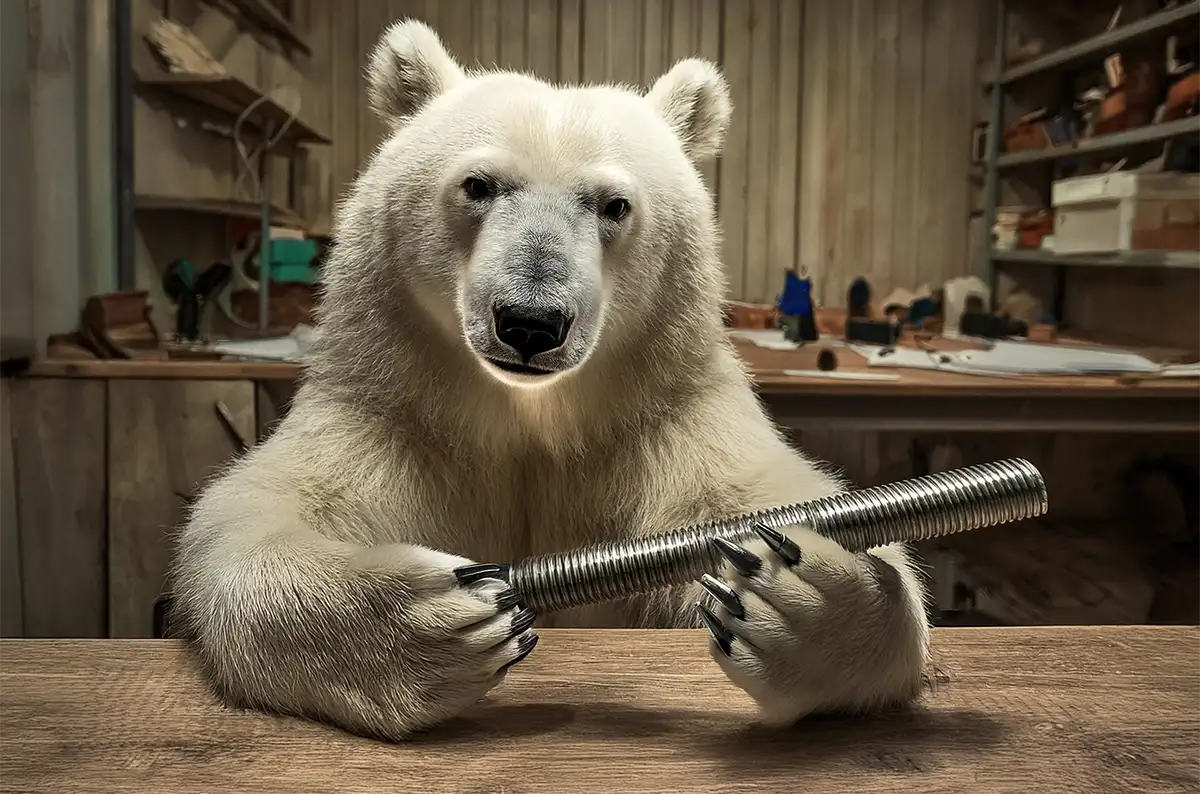
What thread do you need for your application?
You have probably heard a lot about thread types and thread standards and have sometimes looked for an exotic thread abbreviation in a table. Thread types are a dime a dozen, and with increasing specialization in highly complex areas of application, the topic is not getting any clearer. Reason enough to take a step back and get an overview of all the different threads.
Metric ISO thread and co.: Coarse thread international
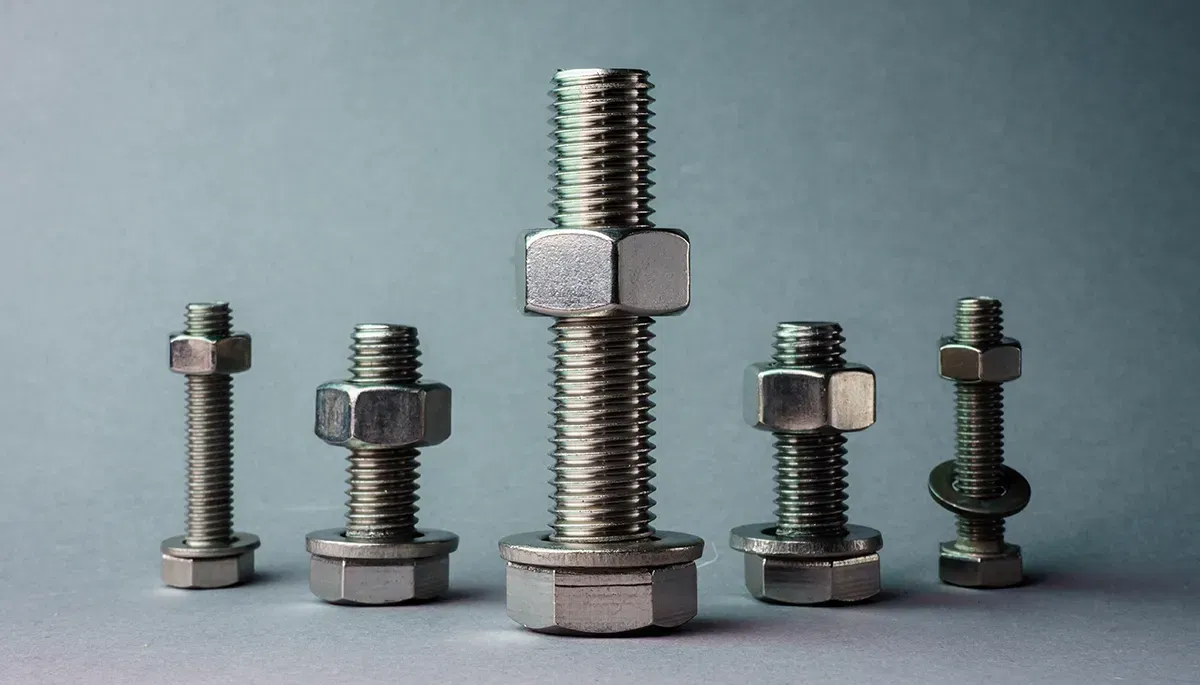
Let's start with the thread that you are probably most familiar with - the coarse thread. In this country, you will usually encounter it as the metric ISO thread, which is also known as the standard thread and normal thread. This alone gives a good indication of how widespread this type of thread actually is. Most screws that you come across here and in many other countries are equipped with this thread.

However, this does not mean that the metric ISO thread is the only coarse thread. Its direct neighbor is the British Standard Whitworth (BSW), an imperial coarse thread that is used in Great Britain. And in the USA we find the Unified Coarse Thread (UNC).

What makes the coarse thread such a perennial favorite? Its geometry is simply perfectly designed for what threads are supposed to do in the vast majority of cases – enable secure screw connections. The profile is tapered so that screws and nuts cannot come loose by themselves under normal circumstances but do not require too much force during assembly. This makes it unbeatable as a screw thread for standard applications.
Pitch x 1: Where you need a fine thread
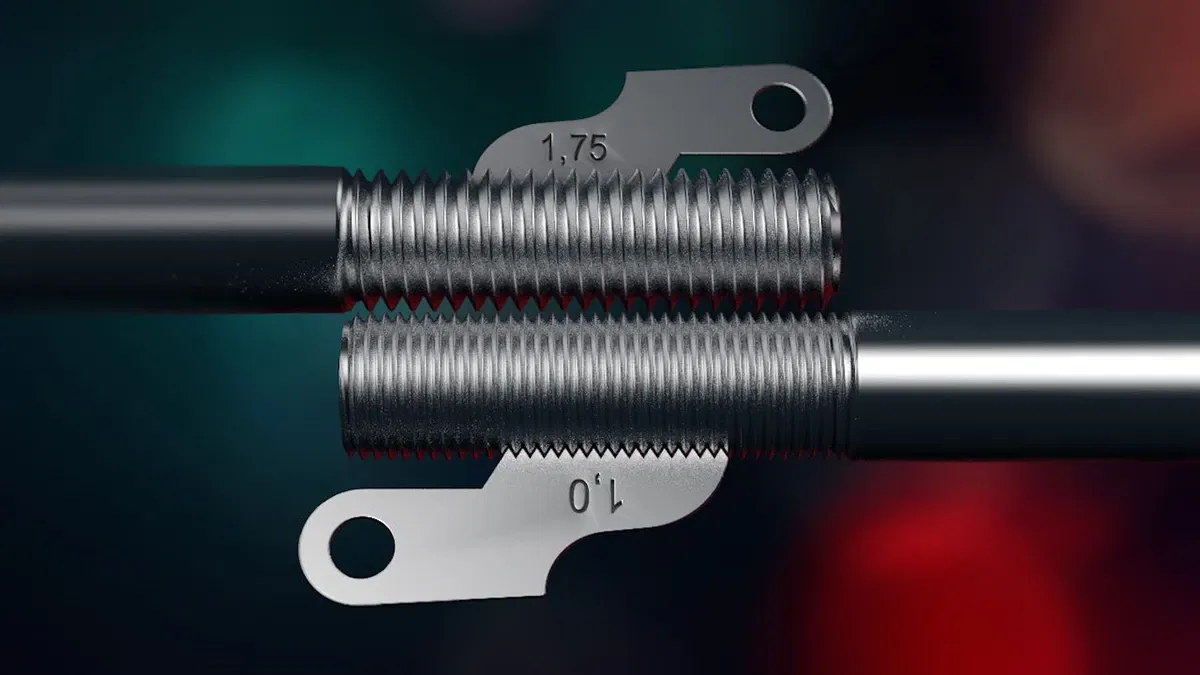
For the most important thread types, there is one or more fine threads for each coarse thread. The metric standard thread M is paired with the metric fine thread MF. The British coarse thread BSW is joined by the British fine thread BSF. And in the USA, there are even two different fine threads UNF and UNEF in addition to the coarse thread UNC.

Compared to the coarse thread, the fine thread has a smaller pitch and therefore a narrower and flatter thread profile. This ensures better self-locking and this, in turn, enables the screw to be firmly seated, even if there are vibrations or there is little space available. At the same time, however, fine threads are also more sensitive than coarse threads, which is why they are only used when their special properties are actually required. You can find out more about the difference between coarse and fine threads in our blog.
Whether in the bathroom or in industry: pipe threads can be found everywhere
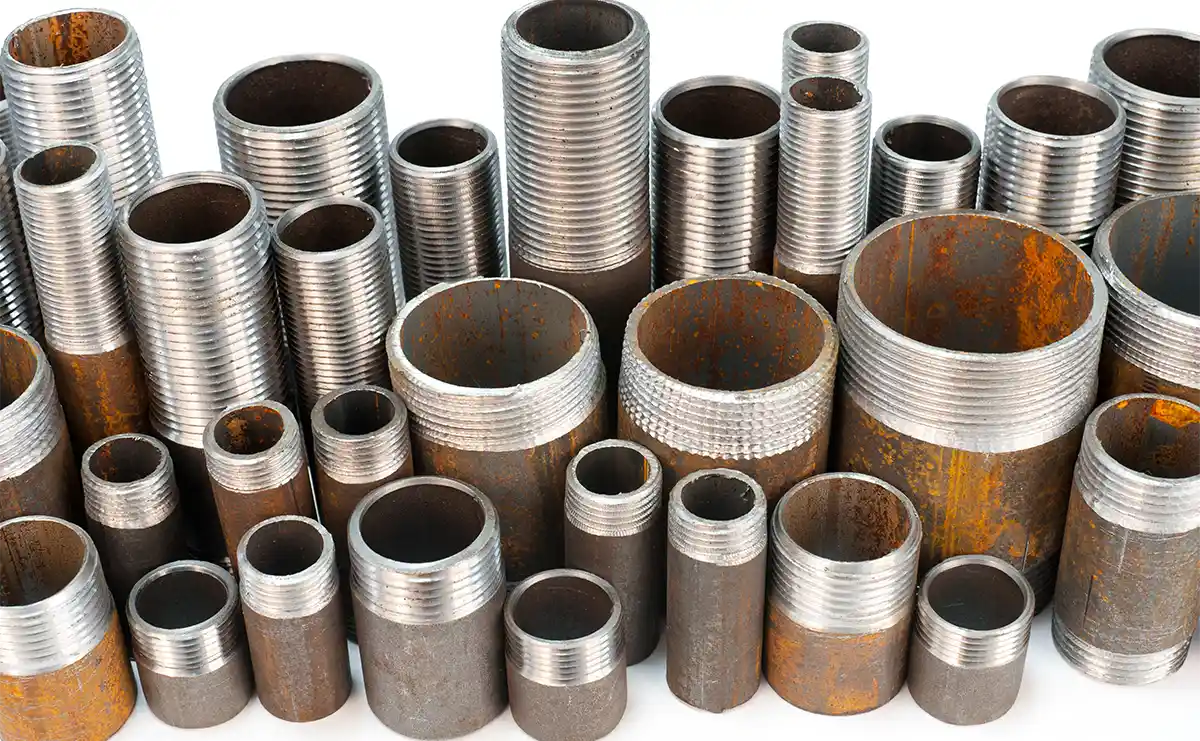
Pipe threads are used wherever liquids, gases, or sometimes solids are transported through pipelines. The pipe thread G, also known as the Whitworth thread, is frequently used in Germany. It is actually one of the British thread types but has established itself as the standard in this country. There is also a whole range of standards for pipe threads in the USA, of which the NPT thread is the most common.

Pipe threads can basically be divided into two types: tapered and cylindrical. Male and female threads can then be combined in different ways to either create a sealing connection in the thread or require additional sealant. We have prepared this complex topic in more detail in our overview of pipe thread types.
English please: Customs thread in a globalized world
The term inch thread describes thread types whose dimensions are not specified in metric units. Threads were already widely used in the 19th century, long before globalization and international supply chains. Different standards have been established in different parts of the world and although global standardization has long been within reach, we are still a long way from achieving it.
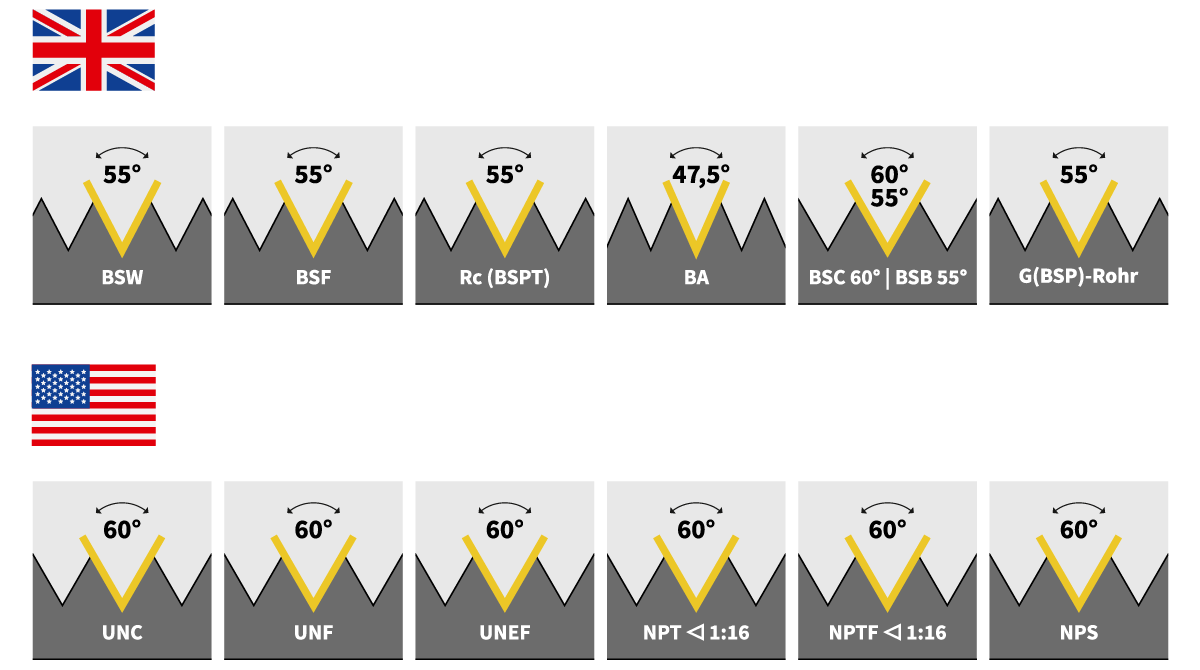
The inch unit is particularly relevant in everyday use for nominal diameters and pitches. The thread designation looks correspondingly different to the metric standard thread, for example. You can find out how to correctly identify the inch thread in our blog for the British and the American thread types.
No screw loose: left-hand thread for safe rotation
The direction of rotation of a thread only becomes an issue in exceptional cases. Most of the time, it concerns situations in which constant rotation could unintentionally loosen a right-hand thread, such as on the right pedal of a bicycle. Left-hand threads can also prevent dangerous mix-ups, for example, when connecting certain gas cylinders. We have summarized why this is the case and what other applications there are for left-hand threads in our blog.
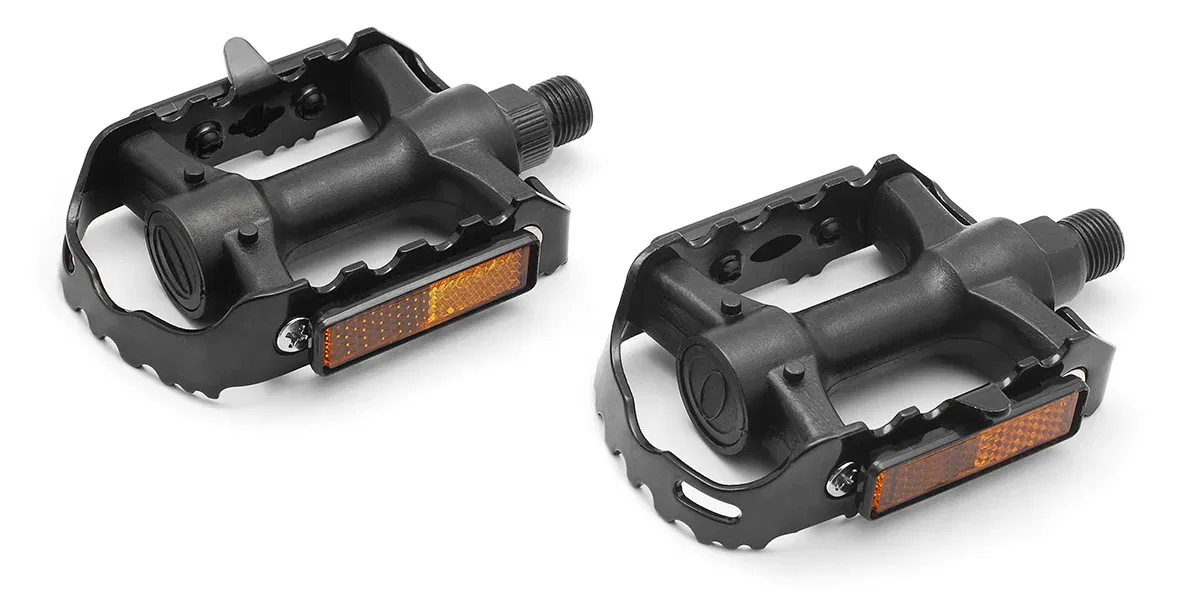
Firm hold, no thanks: Movement threads move mountains
When it comes to threads, movement is usually something we would like to avoid. But beyond bolts and nuts for fastening, there is a category of movement threads in which this is exactly what is expressly desired.
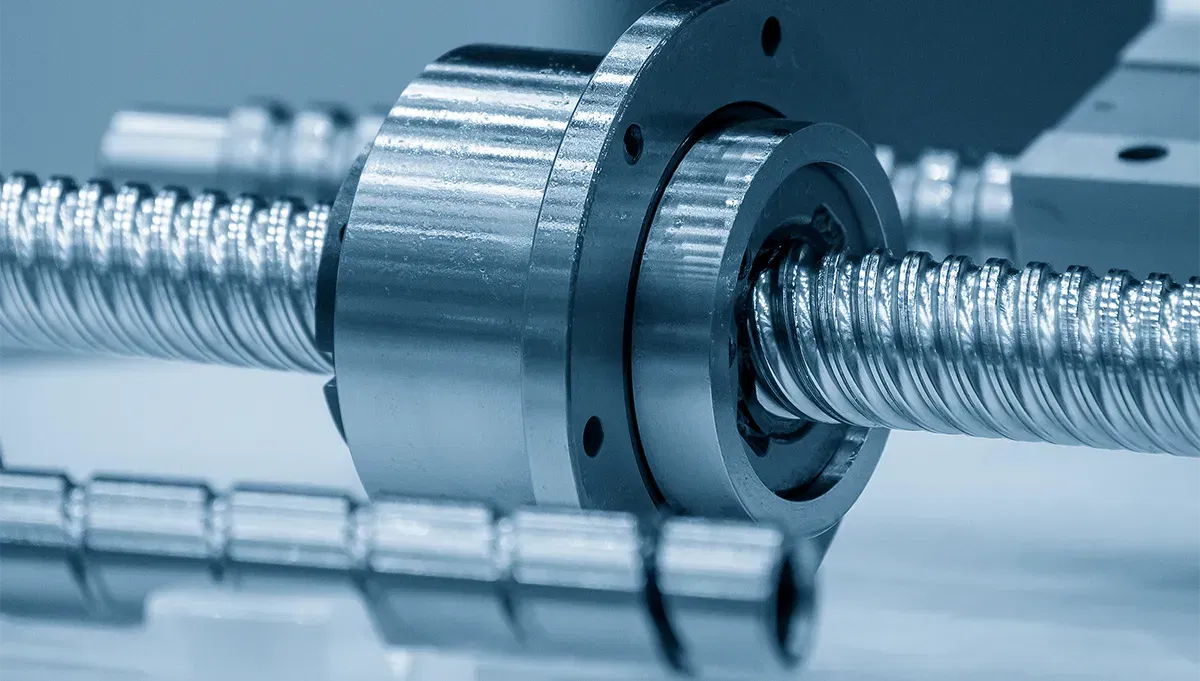
Three thread profiles in particular have proven themselves for movement threads:
- Trapezoidal thread: for feed and adjustment movements, e.g. in machine tools
- Round thread: robust profile for harsh working environments such as in the railroad sector
- Saw thread: for high one-sided loads in presses and lifting systems

Movement threads have become indispensable, especially on threaded rods. You can read a detailed overview of the different types and areas of application in our blog.
Don't spill the beans, go big: Multi-start threads deliver stroke

Is one thread enough or do I need several? You may not have had to ask yourself this question very often. However, several threads can be very practical, especially for motion threads, because they literally cover a lot of distance due to the large stroke. The low self-locking force also effectively reduces friction. If you are interested in the physical mechanisms behind this or want to know what the multi-start thread has to do with your breakfast roll, then we recommend taking a look at our blog!
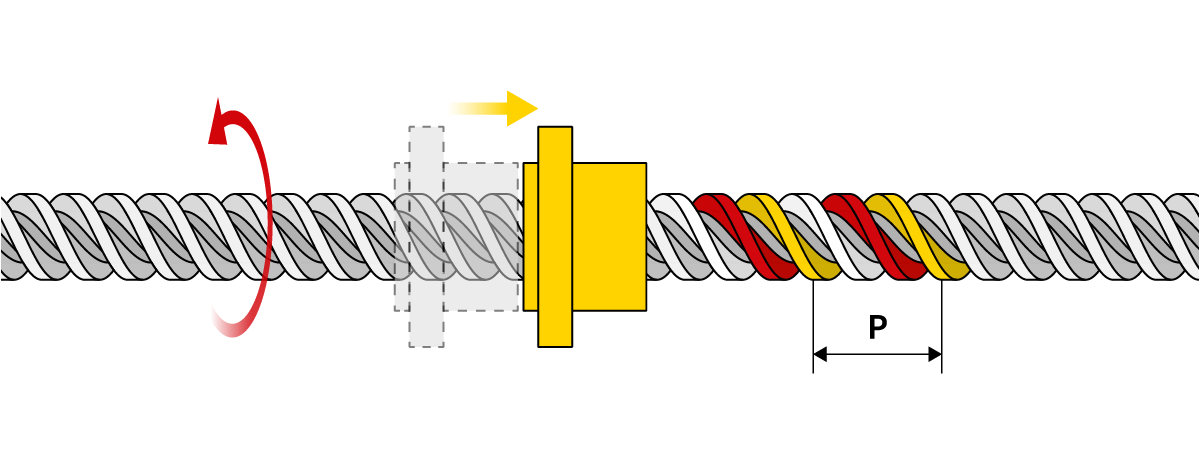
Threads for special cases: PG threads and more
We have now covered the most important common thread types, but there is still a whole area that we have neglected so far: the specialists. Over time, a plethora of standards for internal and external threads have emerged that are designed for pretty much exactly one area of application. These include threads such as the:

These threads are not particularly flexible, but they are unbeatable in their field - they are experts. So if you are starting out in a new field, it is worth checking beforehand to see if there is a special thread for it. A little tip: our blog is a good place to start!
Conclusion: How to find the right thread types
So which is the right thread for your project? For most screw connections, especially in the DIY sector, a standard thread will serve you well. In this country, the metric ISO thread or perhaps the imperial UNC or UNF thread if you are dealing with components from overseas or special technical components such as camera equipment. And for the next bathroom renovation, it can't hurt to take a closer look at the G pipe thread.
Of course, we won't leave you alone in your search for the right thread. You can also address your questions and concerns at any time to our customer service, which you can reach by phone or simply via our contact form. And once you have found the right thread, why not take a look at our online store? There you will find all the tools and accessories you need.
